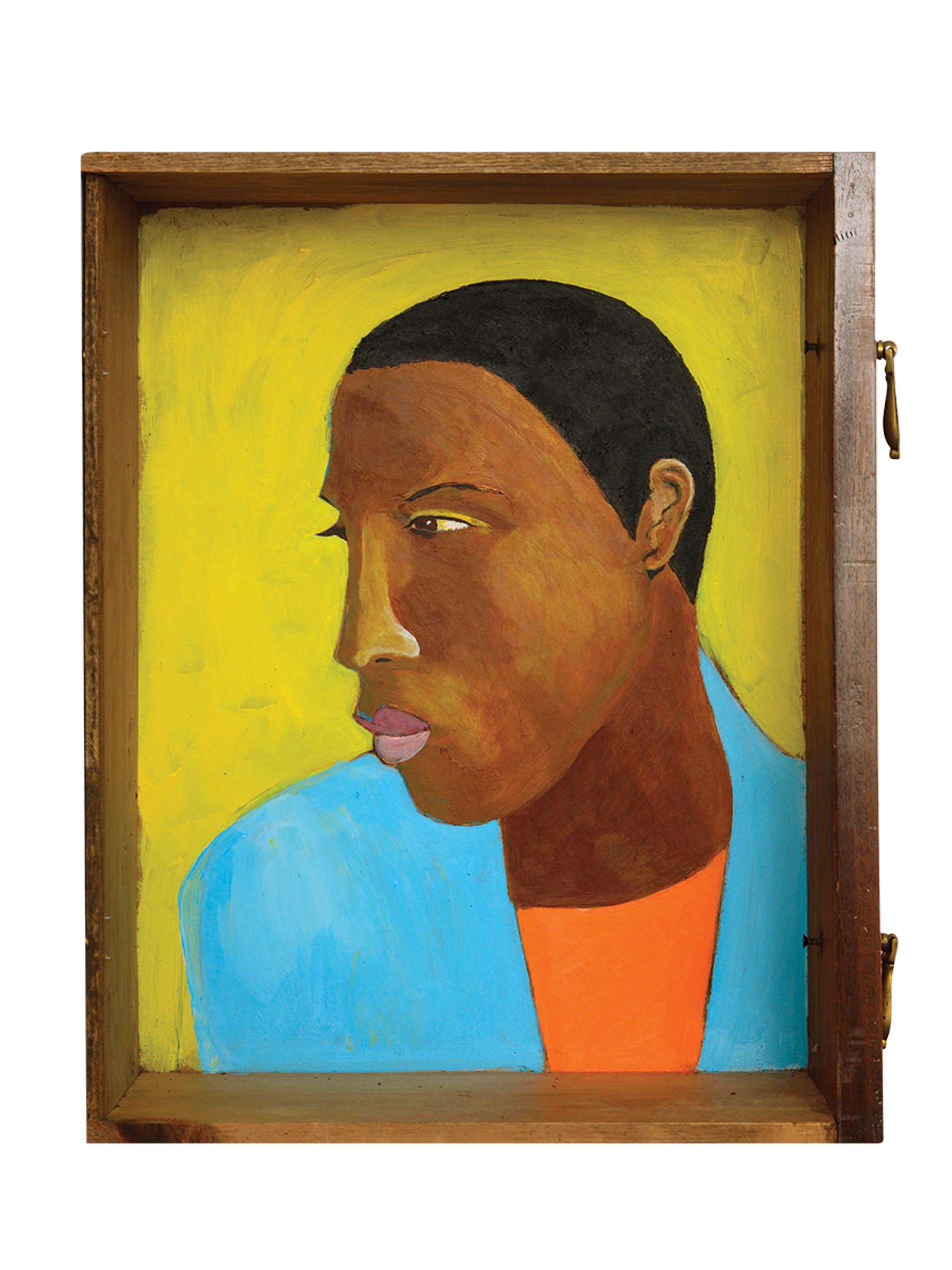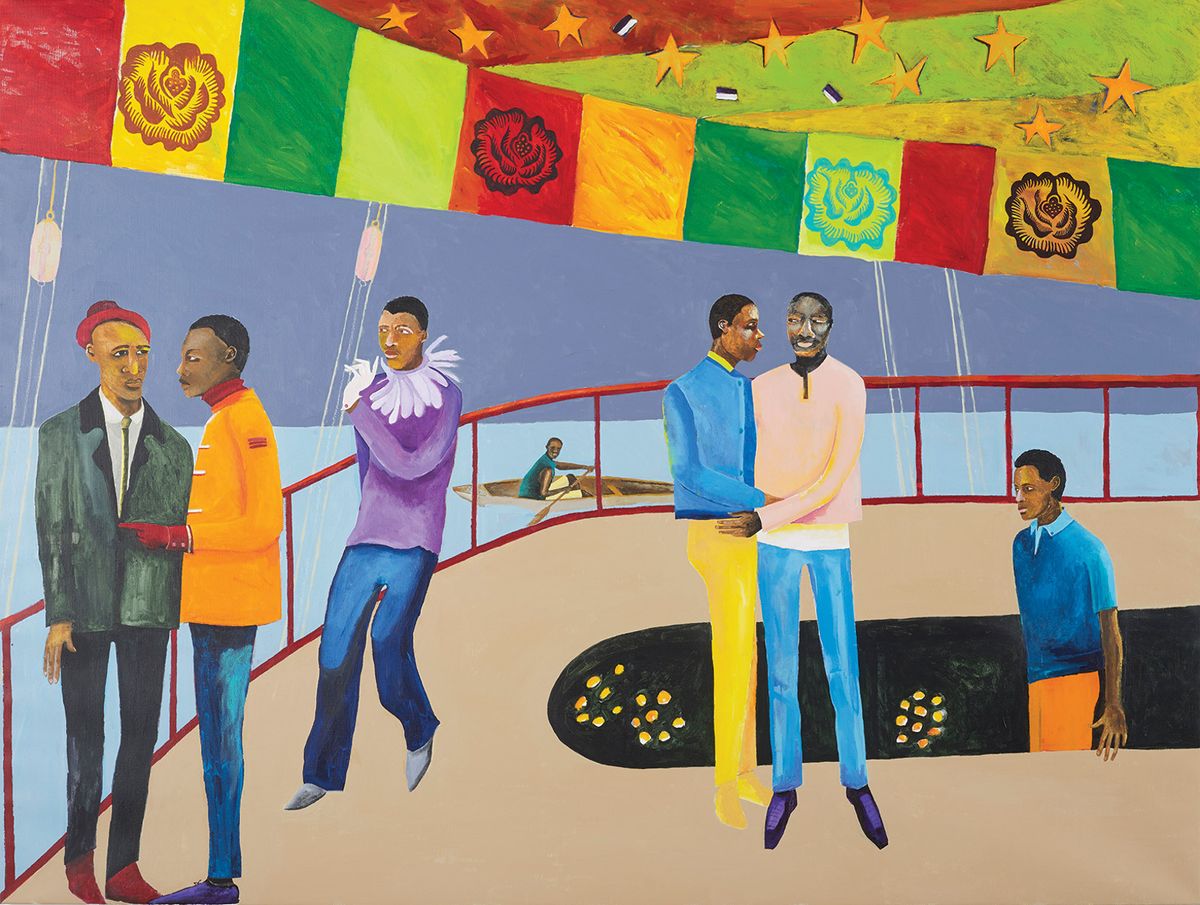The Turner Prize-winning artist and cultural activist Lubaina Himid studied theatre design at Wimbledon School of Art in London, and her early interest in the stage is threaded through a new exhibition of her paintings and installations at Tate Modern. The largest solo show to date of Himid’s work will unfold as a sequence of scenes that place visitors both in the wings and centre stage. “It’s not necessarily a stage that you’re watching,” says the curator, Michael Wellen, who for the past two years has been planning the exhibition with assistant curator Amrita Dhallu and Himid herself. “You too are a player in it.”
It’s not necessarily a stage that you’re watching. You too are a player in it.
Though the focus of Himid’s theatre design course was on opera, what she really wanted to make were productions about changing the world. “Her approach to painting and exhibition-making is also a kind of staging of a political play,” Wellen says. “Her paintings prompt you to try to make sense of a scene and to understand what your relationship with the people pictured might be, as well as what their relationship with each other is. Then there are the cut-outs, which are in the space with you.” Theatre taught her how to create an entire world out of just a few brush strokes or bits of wood.
According to Wellen, one of the most unusual aspects of the exhibition is the use of sound to augment the experience of Himid’s works. Though she never intended to create operas, they did expose her to the way that music can have an emotional effect on narrative, and five sound installations will run through the show—some created by Himid’s fellow artist and teacher Magda Stawarska-Beavan, some a collaboration between the two. Another thing that sets this exhibition apart is that, instead of explanatory texts, there will be open-ended questions embedded in the works and on the walls. Questions such as “What are monuments for?” and “How do you distinguish safety from danger?”, which are, as Wellen says, “easy to ask, very difficult to answer”.

Man in a Shirt Drawer (2017-18) © Lubaina Himid
The Tate aims to foreground the contemporary nature of Himid’s work and thought about creativity, Black experience, making spaces for women, and bringing light to vanished histories. “So much of what she does as a cultural activist is to encourage people to push beyond their limits in order to make positive changes in their own lives and in the lives of those around them,” says Wellen. The show will invite visitors to participate in a dialogue and to consider the changes they want to make and the world they want to build. “It has a realistic sense of hope woven into it.”
• Lubaina Himid, Tate Modern, London, 25 November-3 July 2022


